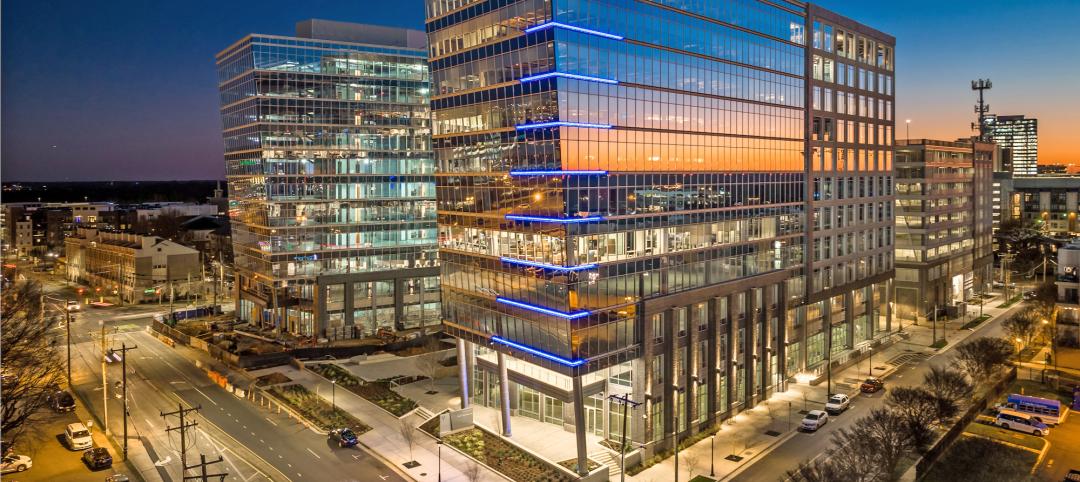Like the familiar adage, “Which came first, the chicken or the egg?,” every building project starts with the same conundrum: Should the client and its design team establish a budget and design a building which meets that budget, or should the team design a project and hope that it fits the budget which the client has set aside for the project
The simple truth is that the concept for every building, and its corresponding program, predates the expense for that building. And if an owner didn’t need the building, there would be no design and there would be no cost. But it’s also true that, as soon as an owner decides to embark on a project, it’s critical to establish the financial benchmarks to verify the viability of the endeavor.
But, for a number of reasons, things don’t always go as planned. One reason is that owners don’t always communicate clearly with their design teams at the outset of projects. For example, several years ago, we were on a design team that presented a concept design to a nonprofit institution for its new building. After weeks of design work, including a pricing exercise, the administrators told us that the project cost was significantly higher than they could afford. They probably had a number in their heads all along, but they had not shared it with the design team in advance. To reduce the cost, the staff had to reprogram the building and the architects had to redesign it.
Obviously, it’s much better if all stakeholders agree to certain parameters before starting any work, especially when a budget is firm. So even if your client does not share its budget with the design team early in the process, don’t assume there is no cap on the cost.
Cost estimates from a napkin sketch?
Even though it’s necessary to produce estimates during the early planning and master planning phases of projects, that process can be tricky, especially if the design team has little information to go on. In extreme cases, clients have asked us to provide estimates based on no more than just napkin sketches. In those cases, all the design team and owner can do is discuss the high-level cost drivers because you can’t do quantity take-off of materials at that point in the project. Such exercises are not always clear or beneficial for the client or the team.
Still, even preliminary estimates based on known parameters can still be useful to demonstrate the implications and challenges of implementing broad conceptual ideas. On one occasion, while we were working on a master planning exercise, the designers produced several schemes in order to pinpoint a potential range of costs. It became apparent that the owner was looking to bracket the highest and lowest costs related to different scopes of work. We quickly provided a throughline of financial understanding for these scopes and costs. It didn’t even require an extensive process.
As this last example illustrates, there’s usually a bit of give and take on cost, even though the client and design team might have to make some compromises. Currently, we’re assisting on a master plan for a county agency. In order to build consensus for a plan that meets the county’s budget, the design team is spending a lot of time determining what the stakeholders want.
For the purposes of identifying the cost, and because there are limitations on the budget, we’re honing into what they need as opposed to what they want to have. It’s good to know the cost implications of these two choices because they’re probably not the same.
We find that it’s even more critical to engage in a meaningful dialogue with the owner and consultant team in cases like this when the outlines of a project are still a little blurry around the edges. In fact, the less established criteria that’s available, the more important it is for the design team to ask the right questions of the owner and listen closely. As we gain a better understanding of the essential program needs, we can benchmark the budget earlier and more accurately.
Providing a high-level understanding of the costs required to meet basic programmatic needs does not need to be an exhaustive exercise. It’s critical to any project, with the exception of those rare owners who can afford not to know–if there really is such a thing. Rather, as a DLR Group colleague once expressed to me, the “form follows funding” approach is the reality for most, particularly institutional and public-sector clients. For our part, we enlist many strategies: published resources; our own 20-year historic database; and our teams’ insight and experience that allows our group to accurately predict costs.
That being said, it’s a bit of a misnomer to answer our original question about which comes first. Designing and budgeting are iterative, interconnected processes that should unfold in tandem as early as possible. As our clients will attest, we believe and enjoy establishing a system of frequent and effective communications throughout the project so that the design team and the owner will be aligned all the way through for success.
About the Author
Victoria Cabanos, Founding and Managing Principal of the Stuart-Lynn Company, is a trained architect and construction professional with over twenty five years of experience in the construction industry. She has worked on a variety of project types in a diversity of roles, including project architect, production engineer, construction supervisor and project manager. With an extensive knowledge of materials and methods and an integrated understanding of the entire construction process she has successfully demonstrated a skill set which includes designing, directing, budgeting, scheduling, resource management and vendor contract negotiations within aspects of the construction industry. She has managed numerous complex project teams, and has brought essential quality management services to the work, while keeping it firmly on budget and schedule. Her in-depth understanding of and familiarity with all aspects of construction afford her an overview of the work that allows for the best determination of priorities. She has also provided valuable insight for lease negotiation and contract development early on in the design process, and has ensured that the most qualified selection of contractors has been reviewed and evaluated for competency and compatibility. Victoria is also an accomplished professional woodworker and the managing partner in her own woodworking firm.
Related Stories
75 Top Building Products | Nov 30, 2022
75 top building products for 2022
Each year, the Building Design+Construction editorial team evaluates the vast universe of new and updated products, materials, and systems for the U.S. building design and construction market. The best-of-the-best products make up our annual 75 Top Products report.
K-12 Schools | Nov 30, 2022
School districts are prioritizing federal funds for air filtration, HVAC upgrades
U.S. school districts are widely planning to use funds from last year’s American Rescue Plan (ARP) to upgrade or improve air filtration and heating/cooling systems, according to a report from the Center for Green Schools at the U.S. Green Building Council. The report, “School Facilities Funding in the Pandemic,” says air filtration and HVAC upgrades are the top facility improvement choice for the 5,004 school districts included in the analysis.
Retail Centers | Nov 29, 2022
'Social' tenants play a vital role in the health of the retail center market
After a long Covid-induced period when the public avoided large gatherings, owners of malls and retail lifestyle centers are increasingly focused on attracting tenants that provide opportunities for socialization. Pent-up demand for experiences involving gatherings of people is fueling renovations and redesigns of large retail developments.
Giants 400 | Nov 28, 2022
Top 130 Office Sector Contractors and CM Firms for 2022
Turner Construction, STO Building Group, Gilbane, and CBRE top the ranking of the nation's largest office sector contractors and construction management (CM) firms for 2022, as reported in Building Design+Construction's 2022 Giants 400 Report.
Legislation | Nov 23, 2022
7 ways the Inflation Reduction Act will impact the building sector
HOK’s Anica Landreneau and Stephanie Miller and Smart Surfaces Coalition’s Greg Kats reveal multiple ways the IRA will benefit the built environment.
Multifamily Housing | Nov 22, 2022
10 compelling multifamily developments debut in 2022
A smart home tech-focused apartment complex in North Phoenix, Ariz., and a factory conversion to lofts in St. Louis highlight the notable multifamily developments to debut recently.
Industrial Facilities | Nov 16, 2022
Industrial building sector construction, while healthy, might also be flattening
For all the hoopla about the ecommerce boom and “last mile” order fulfillment driving demand for more warehouse and manufacturing space, construction of industrial buildings actually declined over the past five years, albeit marginally by 2.1% to $27.3 billion in 2022, according to estimates by IBIS World. Still, construction in this sector remains buzzy.
Wood | Nov 16, 2022
5 steps to using mass timber in multifamily housing
A design-assist approach can provide the most effective delivery method for multifamily housing projects using mass timber as the primary building element.
Giants 400 | Nov 14, 2022
Top 60 Airport Terminal Contractors + CM Firms for 2022
Hensel Phelps, Turner Construction, Walsh Group, and Holder Construction top the ranking of the nation's largest airport terminal contractors and construction management (CM) firms for 2022, as reported in Building Design+Construction's 2022 Giants 400 Report.
Giants 400 | Nov 14, 2022
4 emerging trends from BD+C's 2022 Giants 400 Report
Regenerative design, cognitive health, and jobsite robotics highlight the top trends from the 519 design and construction firms that participated in BD+C's 2022 Giants 400 Report.

















